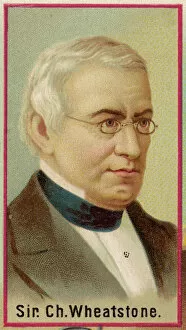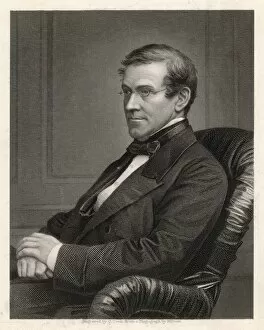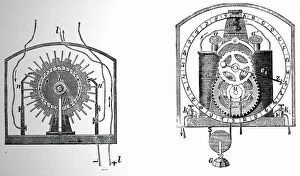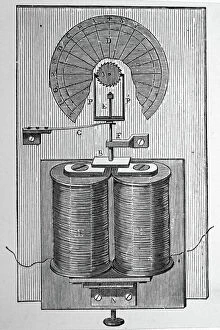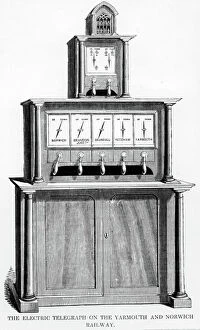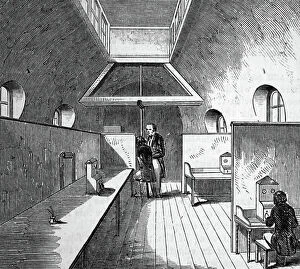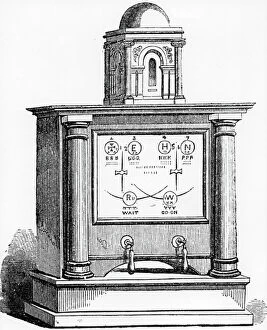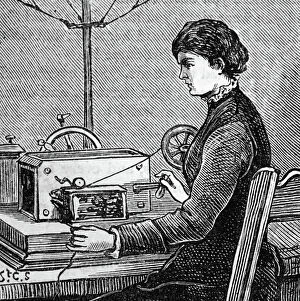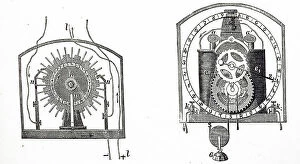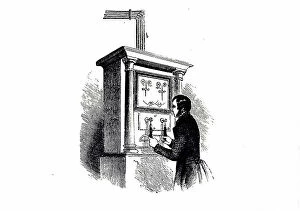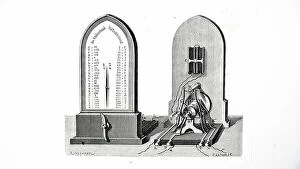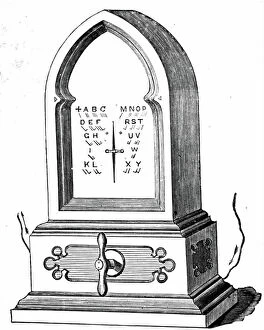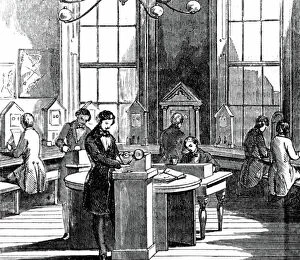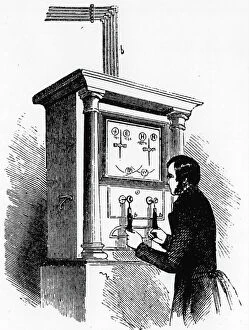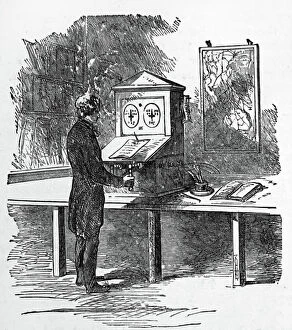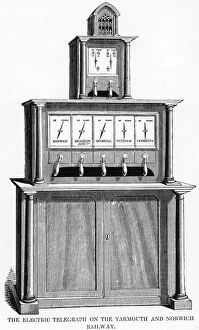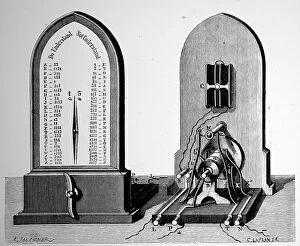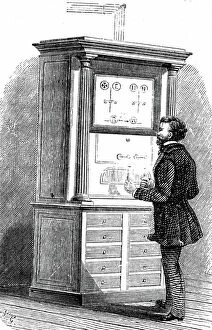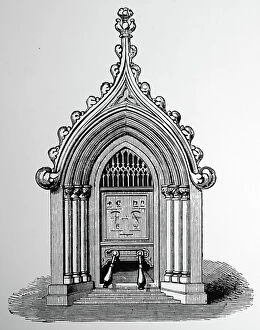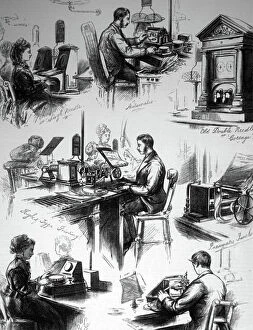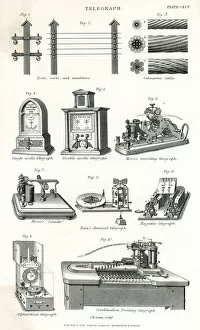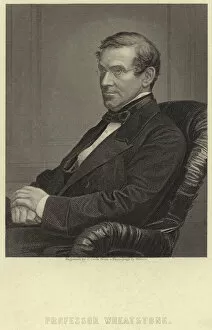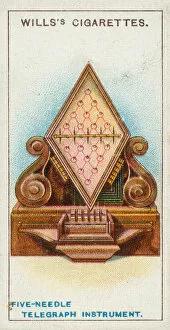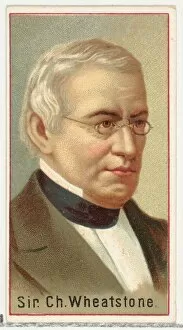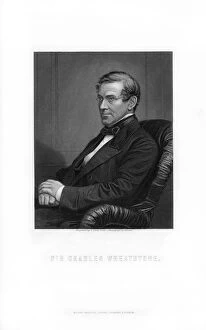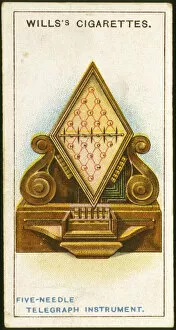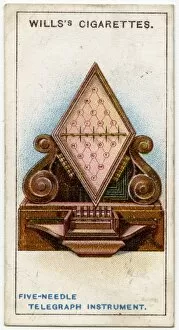Wheatstone Collection
"Wheatstone: Pioneering Telegraphy and Telephony Innovations" Discover the remarkable legacy of Charles Wheatstone
For sale as Licensed Images
Choose your image, Select your licence and Download the media
"Wheatstone: Pioneering Telegraphy and Telephony Innovations" Discover the remarkable legacy of Charles Wheatstone, a British physicist and inventor who revolutionized the world of communication in the 19th century. From his collaboration with William Cooke to his groundbreaking inventions, Wheatstone's contributions have left an indelible mark on history. In this captivating engraving, we witness C. Wheatstone alongside Kilburn, showcasing their ingenious telegraph machinery. Their partnership led to the development of various telegraphic devices that transformed long-distance communication forever. Telegraphy enthusiasts will be fascinated by the intricate details captured in this engraving depicting Wheatstones' Five-Needle Telegraph Instrument. This chromolitho artwork beautifully showcases the complexity and elegance of his invention. Step into a mesmerizing scene as you explore another engraving featuring "Wheatstones Telephonic Concert. " Witness how he harnessed sound transmission through electrical signals, laying the foundation for modern-day telephony. Delve deeper into Wheatstone's life with an enchanting printers sample from Sir Charles Wheatstone himself for the World Inventors souvenir album (A25). Marvel at his brilliance as you admire this rare artifact that celebrates inventors worldwide. Immerse yourself in history as we take you back to 1852 when London celebrated the opening of its telegraph link to Paris—a monumental achievement made possible by none other than Charles Wheatstone. Witness how he bridged nations through technology and brought people closer together. This captivating portrait captures Sir Charles Wheatstone's essence—an accomplished British inventor whose genius knew no bounds. His relentless pursuit of innovation paved new paths for generations to come. Join us on a journey through time as we pay tribute to Sir Charles Wheatstone—British physicist extraordinaire. Explore his vast contributions that shaped our understanding of physics during the 19th century and beyond. Witness technological evolution firsthand with an enchanting glimpse into William Cooke and Charles Wheatstone's patented five-needle telegraph.

